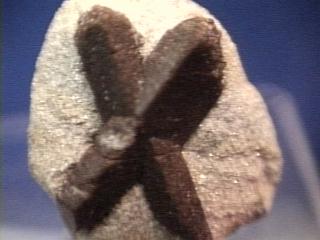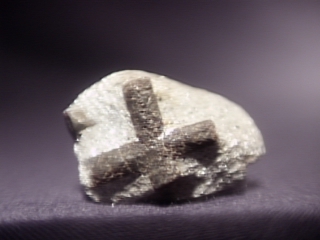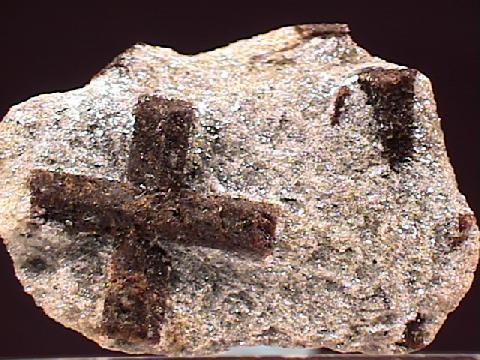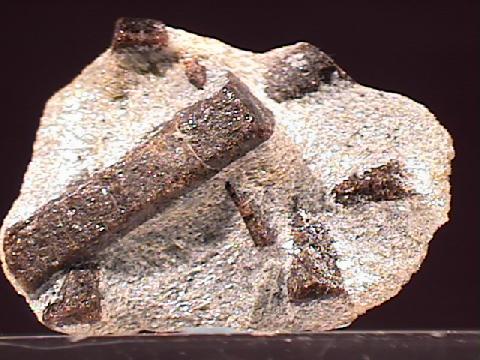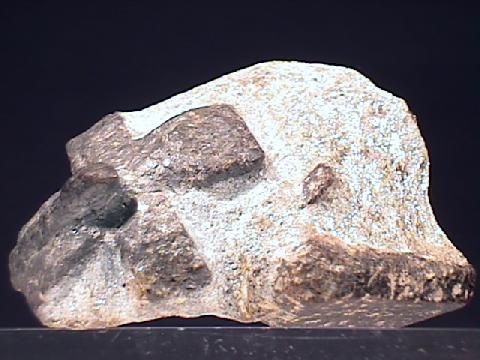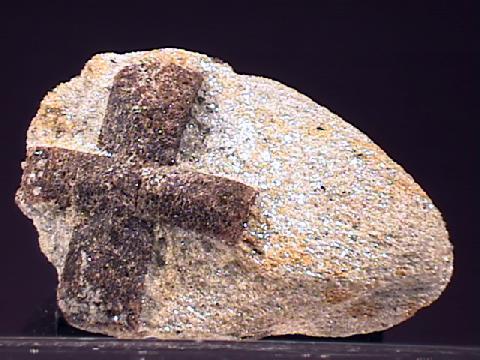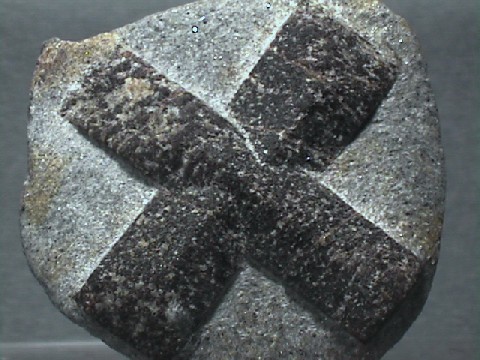 THE MINERAL STAUROLITE
THE MINERAL STAUROLITE
- Chemistry: Fe2Al9Si4O22(OH)2, Iron Aluminum Silicate Hydroxide
- Class: Silicates
- Subclass: Nesosilicate
- Uses: mineral specimens
- Specimens
Staurolite is a common metamorphic mineral that is useful to geologists to determine the degree of metamorphism.
Staurolite is famous for its
twinned crystals that form into the shape of a cross.
Its name comes from the greek for cross.
The twin is a classic penetration twin where it appears as if two crystals grew into and out of each other.
It actually forms two twin types; one that is nearly 90 degrees and one that is nearly 60 degrees.
The 60 degree type is more common but the 90 degree type is the most sought after.
It was associated with Christianity as a symbol for the cross and as a good luck charm.
It has been given the names "Fairy Stone" or Fairy Cross".
Some scarcer specimens show both twin forms and can look like a blunt six rayed star.
PHYSICAL CHARACTERISTICS:
- Color is reddish-brown, brown, and black.
- Luster is vitreous to resinous to dull.
- Transparency crystals are translucent to opaque.
- Crystal System monoclinic; 2/m
- Crystal Habits: the typical crystal are prismatic or tabular.
Some crystals can have a psuedo-hexagonal cross-section but most are flattened into a more diamond shaped cross-section with two of the four points truncated.
Twinning is seen in about 35% of the specimens encountered in nature.
Twins are cross (+) or X-shaped and can be both at the same time.
Crystals sometimes grown onto kyanite crystals.
- Cleavage poor, in one direction.
- Fracture is uneven to conchoidal
- Hardness is 7-7.5
- Specific Gravity is 3.7-3.8
- Streak white
- Associated Minerals include almandine, micas, kyanite and other metamorphic minerals.
- Other Characteristics:
- Notable Occurances Ducktown Tennessee, Georgia, Virginia and Montana, USA; Brazil; Scotland, Italy and France.
- Best Field Indicators are color, associations, twinning and crystal habit.
 THE MINERAL STAUROLITE
THE MINERAL STAUROLITE


